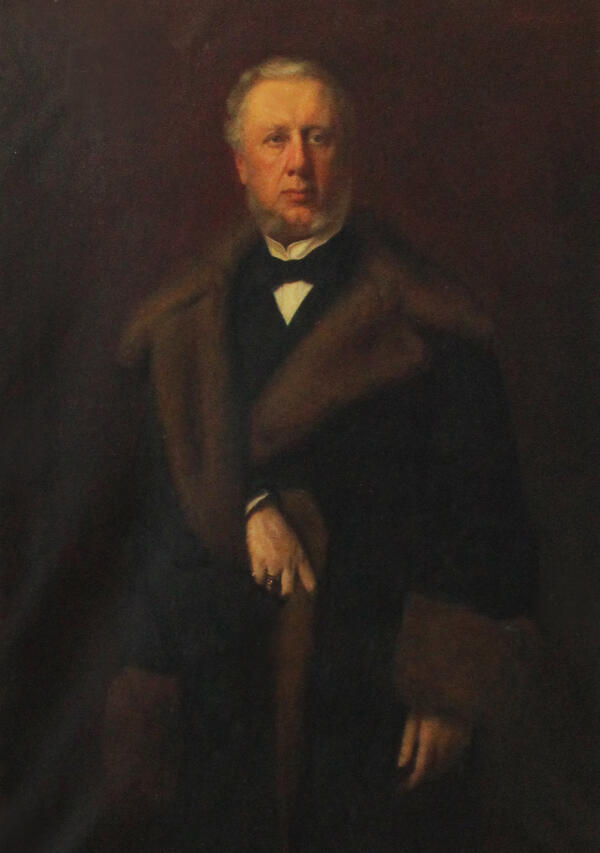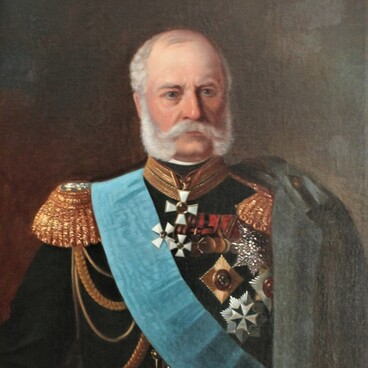Count Vladimir Orlov-Davydov (1809–1882) was son of Pyotr and Natalia Orlovs. He was named after his grandfarther, Vladimir Orlov. He spent his early childhood in Italy where his mom was staying on account of her poor health. After her death in 1819, the boy was sent to his grandfather’s estate to get a proper upbringing. He later attended Edinburgh University in Scotland. While there he met Walter Scott for whom Davydov made the first translation of The Tale of Igor’s Campaign in 1827. After Walter Scott’s death, he financially supported his family and arranged the publication of a collection of his works.
After graduating from the university, Vladimir got a job at the Russian embassy in London, and sometime later he moved to Paris. On his way back to Russia, he made a stop in Germany: while on his visit to Weimar in Germany, he was received by Duchess Maria Pavlovna, the daughter of Emperor Paul, and he met Johann Wolfgang Goethe. Upon the arrival in Russia, he was hired by the Ministry of Foreign Affairs. After a long journey, he wrote a book titled Travel Notes about My Time in the Ionian Islands, Greece, Asia Minor, and Turkey in 1835 (Saint Petersburg, 1839–1840). For that book, Davydov was awarded an honorary degree by Edinburgh University.
Even though Vladimir used his father’s last name, he regarded himself as an Orlov. In 1856, the Russian emperor officially allowed him and his descendants to be referred to as His Excellency Count Orlov-Davydov.
As someone who received a European education and a humanitarian at heart, he really cared about a lot of the issues of Russia’s public life at the time and often submitted notes and proposals to various government organizations. He was a member of a commission for collecting donations for people affected by famines; the commission was chaired by Prince Alexander Alexandrovich, the future Emperor Alexander III. At his estates, he did a great deal to improve the life of his peasants, arranging for temples, hospitals, and schools to be built in the villages. In 1866-1869, he was a member of the Board of Trustees of the public charities of Saint Petersburg. He was constantly donating money to libraries and museums.
Vladimir hardly ever stayed at the Usolskoye estate as a young man, only visiting it occasionally. He only spent here a relatively extended period of time in 1832 after getting married to 18-year-old Olga Baryatinskaya. It was in her honour that he named the estate, the Maryino estate.
After graduating from the university, Vladimir got a job at the Russian embassy in London, and sometime later he moved to Paris. On his way back to Russia, he made a stop in Germany: while on his visit to Weimar in Germany, he was received by Duchess Maria Pavlovna, the daughter of Emperor Paul, and he met Johann Wolfgang Goethe. Upon the arrival in Russia, he was hired by the Ministry of Foreign Affairs. After a long journey, he wrote a book titled Travel Notes about My Time in the Ionian Islands, Greece, Asia Minor, and Turkey in 1835 (Saint Petersburg, 1839–1840). For that book, Davydov was awarded an honorary degree by Edinburgh University.
Even though Vladimir used his father’s last name, he regarded himself as an Orlov. In 1856, the Russian emperor officially allowed him and his descendants to be referred to as His Excellency Count Orlov-Davydov.
As someone who received a European education and a humanitarian at heart, he really cared about a lot of the issues of Russia’s public life at the time and often submitted notes and proposals to various government organizations. He was a member of a commission for collecting donations for people affected by famines; the commission was chaired by Prince Alexander Alexandrovich, the future Emperor Alexander III. At his estates, he did a great deal to improve the life of his peasants, arranging for temples, hospitals, and schools to be built in the villages. In 1866-1869, he was a member of the Board of Trustees of the public charities of Saint Petersburg. He was constantly donating money to libraries and museums.
Vladimir hardly ever stayed at the Usolskoye estate as a young man, only visiting it occasionally. He only spent here a relatively extended period of time in 1832 after getting married to 18-year-old Olga Baryatinskaya. It was in her honour that he named the estate, the Maryino estate.



